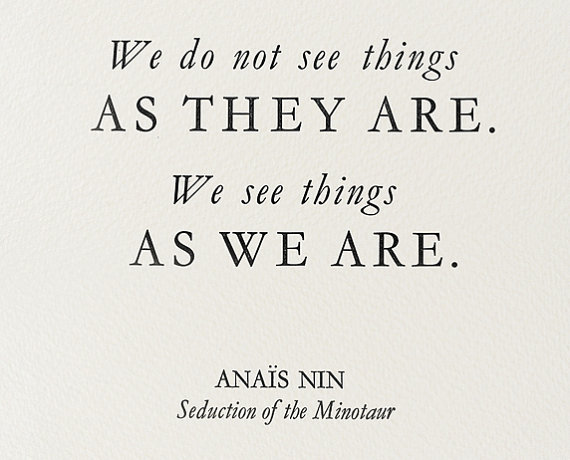
The single biggest problem in communication is the illusion that it has taken place. – George Bernard Shaw
What do good communication skills and framing photos have in common?
I was getting some photos framed a few days ago. Framing photos – should be a simple communication task – right? Wrong. The guy in the shop suggested one type of frame – a square shape in a pastel color. However, I had black in mind and asked for those? He showed me the rounded option, still a bright color example. The shape looked well with the photos. We tried both the square and the rounded, and I chose the rounded frame but asked again for the black one.
And we agreed on that.
The next day, when I came to pick up the frames, they were all black, but all square. He was sure that we have agreed on that combination.
And he was not trying to sell me the wrong ones; he genuinely did not understand me correctly, although I thought I made it clear. In other words, we did communicate, but we did not understand each other. The frame shop guy thought that the square ones work better and obviously followed through with just one part of our conversation.
Does this sound familiar? It seems that, more often then not, we don’t talk to listen but rush to respond. That is how we skip the steps necessary for the full understanding of both sides and get the illusion that we are communicating.
How is this related to the startup pitch you are making?
There are three main takeouts from this story:
1.Too many things at once
We had too many variables going on – two types of frames and two colors.
2.Personal lens
A personal preference – the square ones he believed will do better.
3.Summary
We did not agree at the very end (again) on the shape, just on the color.
All of these play a very important part in overcoming the biggest problem in communication – the mutual understanding.
Are you sure you are getting your message across?
So you have prepared the presentation and rehearsed it, and it makes perfect sense. Then after the keynote, you start getting the questions that indicate that a good number of people understood it differently than you, and you were convinced the pitch meant something else.
Some of the questions may include:
- What is it that you actually do?
- Which problem are you solving?
- What do you need from us?
What a frustrating situation! And there you are, standing on stage, trying to raise money and appear coherent and confident.
You and Me dissonance
There is a dissonance in the dialogue because I do not have the same experience, knowledge, and emotions as you do, I do not see the world same as you do.
The assumption is the sister of misunderstanding. Maybe it is even its mother? Let’s have a look at the abovementioned framing misunderstanding from the startup pitch point of view:
1.Too many things at once.
You have been working long and hard on your product or service, and you want to tell the world (as much as you can) about it.
2.Personal lens
You see the product/service with an expert eye, and you have a hard time being objective. The audience or an investor has not heard about it before or have a different view on things.
3.Summary
Your pitch is not guiding the audience step-by-step toward your goal, so in the end, no one is sure you were on stage.

Here are a few things to keep in mind to avoid these misunderstandings.
The First Slide – the Catcher
Your first slides and your last slide are the most important.
The first slide is making sure to grab the attention and say the most valuable thing first, while the attention of the audience is still fresh. If you are unsure how to start, have a great story about the problem you are solving. Or, if it’s a more extended keynote, have the contents spelled out in an organized manner and refer back to them throughout the presentation.
Problem vs Solution – The Why and What
Ideas are mesmerizing, indeed. However, way too often in the pitches, the problem you are solving somehow gets left out, it is unclear, or it does not exist. Drowning the audience in the extended talk about the solution / the features, screens, demo, UX, etc. will only help them lose interest in your pitch. Try to have the audience convinced in the importance of the problem first (the why part). Then, when you offer a great solution, it will be a eureka moment.
The One-Liner – The Master of Scarcity
It is like Uber for boats. It is like Instagram for divers. It is like daycare for dogs.
ll of the above mentioned are comparing your solution to something already established. The reason for this is to create understanding instantly. A daycare for dogs will take care of your dog just as daycares take care of the kids during the day.
Put this one-liner on your first slide to instantly create a mental picture in your audience’s head about what you are doing.
Your Last Slides – The Summary and The Asking
Look at it as the message that stays with the audience. Use the impact of the last word. You can do a very brief summary of this brilliant way you will impact the world and ask for what you need from the jury or the audience for that to happen. I have written about this kind of improvements also in 5 things you can do immediately to have a better startup pitch:
I see way too many pitches that give you no reason to participate. What are you looking for? Why are you on stage? Do you need money, connections, advice, PR…? Some people are ashamed to ask, and some others simply forget. But the key is to be clear and give the reason why you are asking for it. It should come out from your pitch story.
Going back to the story from the beginning, before I have assumed that we have understood each other, I should have said shortly, clearly and summing it all up:
OK, to be sure, we agreed to do the round frames in black?
